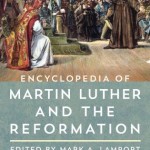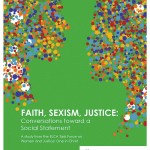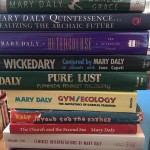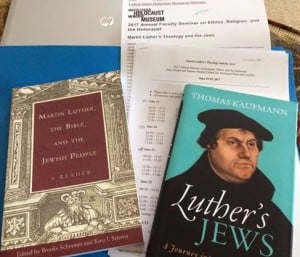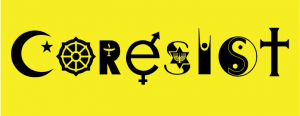 How does one adequately describe ways that gender studies has transformed the study and practice of religion in the U.S. and around the world? … in 8,000 words or less! This is a task I’ve been invited to undertake this summer for a chapter on “Religion” in the forthcoming Companion to Gender Studies to be published by Wiley-Blackwell to complement to their recent and wide-ranging Encyclopedia of Gender and Sexuality Studies.
How does one adequately describe ways that gender studies has transformed the study and practice of religion in the U.S. and around the world? … in 8,000 words or less! This is a task I’ve been invited to undertake this summer for a chapter on “Religion” in the forthcoming Companion to Gender Studies to be published by Wiley-Blackwell to complement to their recent and wide-ranging Encyclopedia of Gender and Sexuality Studies.
As I do this, I’m keenly aware of how my identity as a white feminist theologian of Christian traditions in the U.S. makes it too easy to stick with a racially and religiously homogenous narrative, and so I attempt to work against that with a piece that is intersectional as well as multifaith. You will see below how I include key work in feminist theologies, gender studies in religion, queer theology, that integrates discussion of Christian, Jewish, Muslim, Buddhist, pagan, indigenous, and other religious traditions. It occurs to me that the approach and the topics may be of interest to many readers, so I’m sharing my current plan for this project here.
Women as Human. In this section, I’ll include discussion of the generation of foundational feminist work like Mary Wollstonecraft’s Vindication of the Rights of Women in 1792, and Sojourner Truth’s speech at the 1851 Women’s Rights Convention in Akron, Ohio, which challenged conventional patriarchal wisdom about who was considered a woman and what that meant. 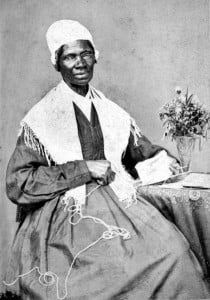 I will describe how Valerie Saiving’s 1960 article “The Human Situation” launched a new generation of scholarship in religion that attended to the question of how women’s humanity was and was not included in theology, and how Mary Daly’s first book, The Church and the Second Sex (1968), began connecting social discrimination of women to Catholic church teachings about their humanity and limitations on their ability to lead. I will also include discussion of how attention to gender in theological anthropology leads to consideration of women’s moral agency through the work of mujerista scholar Ada Maria Isasi-Diaz.
I will describe how Valerie Saiving’s 1960 article “The Human Situation” launched a new generation of scholarship in religion that attended to the question of how women’s humanity was and was not included in theology, and how Mary Daly’s first book, The Church and the Second Sex (1968), began connecting social discrimination of women to Catholic church teachings about their humanity and limitations on their ability to lead. I will also include discussion of how attention to gender in theological anthropology leads to consideration of women’s moral agency through the work of mujerista scholar Ada Maria Isasi-Diaz.
Women as Leaders. This section will talk about how work on gender studies and religion began to have a cascading effect on debates about the formal leadership of women in religions. From the ordination of Antoinette Brown Blackwell in the 19th century to the multitudes of denominations that began officially recognizing women as ordained leaders in the 1970s, the impact on Christianity is widespread. The impact of gender studies on debates about women as rabbis in Judaism, with Sally Priesand as the first ordained by a rabbinical seminary in 1972, will be discussed through the historical work of Pamela Nadell, and the controversy around women as prayer leaders and imams will be discussed in Islam with the work of Amina Wadud Inside the Gender Jihad.
Images of and Language for God. This section will begin with analysis of the maleness of God from Mary Daly’s 1973 book Beyond God the Father (1973) which lay out a case against exclusive male imagery and language for God in Christianity. I will show how discussion of metaphors and models of the divine emerge and function become a major flashpoint in theology and religion with the work of Sallie McFague. I will also include the philosophical explorations of Carol Christ as she makes argument for the Goddess as part of abandoning male language and images for God. Connected to that work, I will also describe ways that this has been put into practice in various religious contexts like a congregation in San Francisco as well as Jewish and Christian feminist liturgies.
History/Herstory. This section will show how gender studies has led to re-visioned stories of religion’s collective past through the work of scholars like Karen Torjesen who debunks the notion that women were not leaders in the early Christian movement, Leila Ahmed who traces the history of patriarchy and the emergence of Islam as a counter-cultural movement of inclusion, and John Boswell’s study of early medieval history as a moment when homosexuality began to be stigmatized and marginalized for cultural and political, rather than theological, reasons. In each case, I will discuss how detailed study of the history of a religion by scholars trained in gender studies transforms conventional wisdom about a patriarchal past that is employed in service of exclusion on the basis of gender in the contemporary world.
Sacred Texts and Interpretation. This section will detail how early scholar-activists like Sarah and Angelina Grimke, Matilda Joslyn Gage, and Elizabeth Cady Stanton (The Woman’s Bible) laid the groundwork for Christian feminist biblical interpretation formally and fully realized by later scholars like Renita Weems and Elisabeth Schussler-Fiorenza. 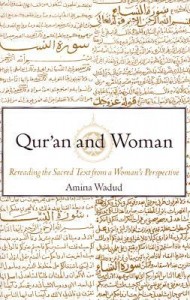 I will engage the work of Judith Plaskow and Susannah Heschel to show how Jewish scholars’ attention to gender affected interpretation of the Hebrew bible. I will also include the work of Amina Wadud in Quran and Woman to demonstrate how interpretation of the sacred texts in Islam has similarly been conditioned by patriarchal structures of authority and transformed by gender studies.
I will engage the work of Judith Plaskow and Susannah Heschel to show how Jewish scholars’ attention to gender affected interpretation of the Hebrew bible. I will also include the work of Amina Wadud in Quran and Woman to demonstrate how interpretation of the sacred texts in Islam has similarly been conditioned by patriarchal structures of authority and transformed by gender studies.
Belief and Doctrine. This section will use examples from Christianity, Islam, and Buddhism to show how gender studies has transformed central doctrines and teachings in religions. In Christianity, the implications of a male savior, including the doctrines of Christology and atonement, have been critiqued and analyzed by scholars like Rosemary Radford Ruether, Jacquelyn Grant, and Delores Williams. In Islam, teachings about creation and the afterlife have been revisited by scholars like Amina Wadud. In Buddhism, Rita Gross has argued for an androgynous reconstruction of the dharma.
Race Matters. This section will discuss intersectionality of gender studies in religion, focusing on Alice Walker’s definition of “womanist” and its reception and use by African American women theologians and ethicists, as well as Ada Maria Isasi-Diaz’s development and use of the term mujerista and its connection to Latin American liberation theology. It will include a discussion of Asian Pacific Islander feminist work by Kwok Pui-Lan and Chung Hyung Kyung as they too reconstruct religious teachings and traditions at the intersection of gender, race, ethnicity, and culture.
Sexuality and Queer Theory. This section will discuss the intersection of gender studies in religion with sexuality studies and queer theory as it has emerged with the work of Virginia Ramey Mollenkott and Patrick Cheng in Christianity, and Scott Siraj al-Haqq Kugle in Islam. Here I will also discuss how the scholarly and theoretical work on gender and sexuality has intersected with textual interpretation, and impacted various religions’ polity and practices in terms of including, ordaining, and marrying gay, lesbian, and queer members.
Global and Transnational Justice. This section will discuss how gender studies scholar-activists like Vandana Shiva, Gloria Anzaldua, and Chandra Mohanty have employed as well as challenged religious paradigms as resource for justice-work alongside various networks and organizations that attend to gender and religion in global development work.
Clearly, I’ve got a lot of work to do.
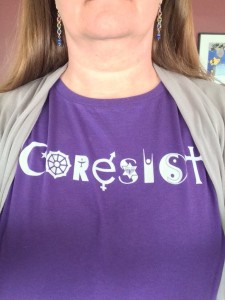 For now, perhaps I’ve given a few people suggestions for new things to read, and begun to model some of the ways that gender studies in religion is and must continue to be intersectional and multifaith.
For now, perhaps I’ve given a few people suggestions for new things to read, and begun to model some of the ways that gender studies in religion is and must continue to be intersectional and multifaith.
CoResist image by Abigail Clauhs, available for screenprinting!
Sojourner Truth image via wikimedia.
Quran and Woman available here.

